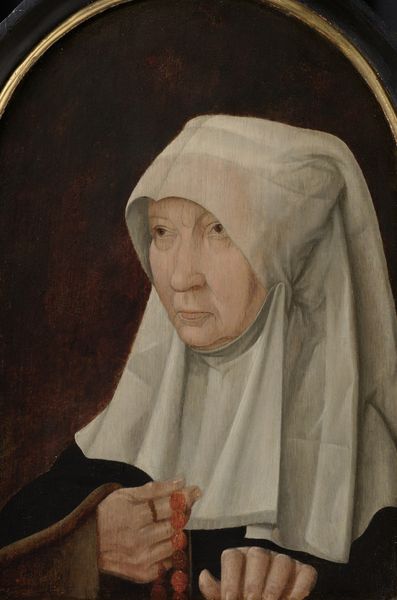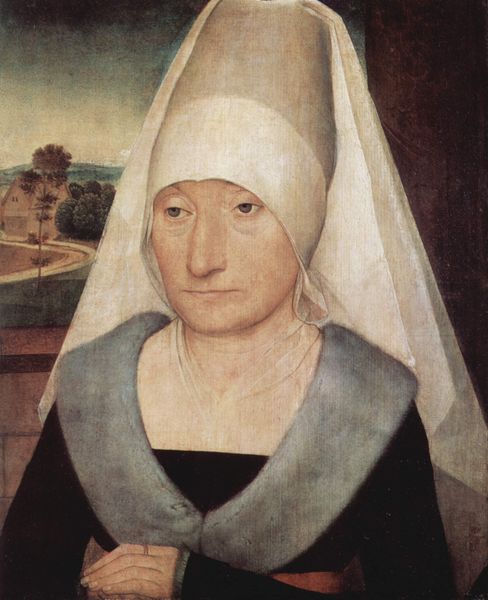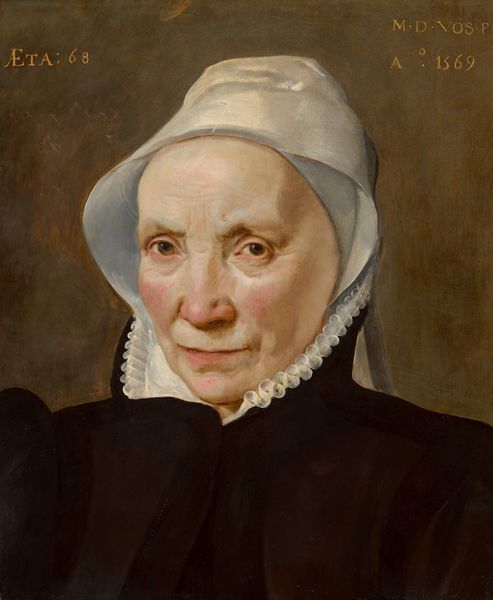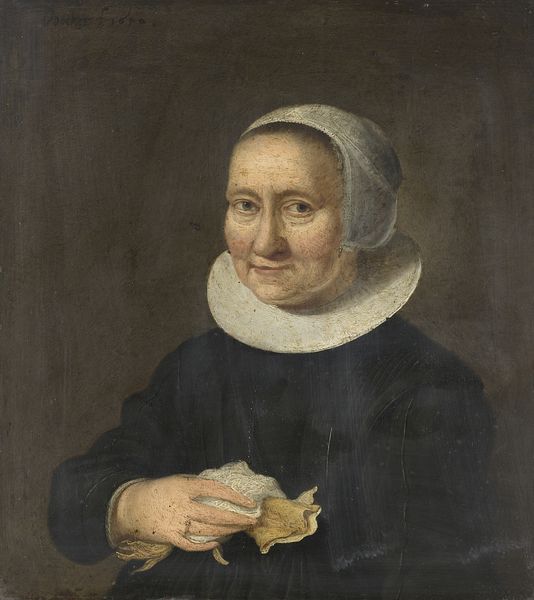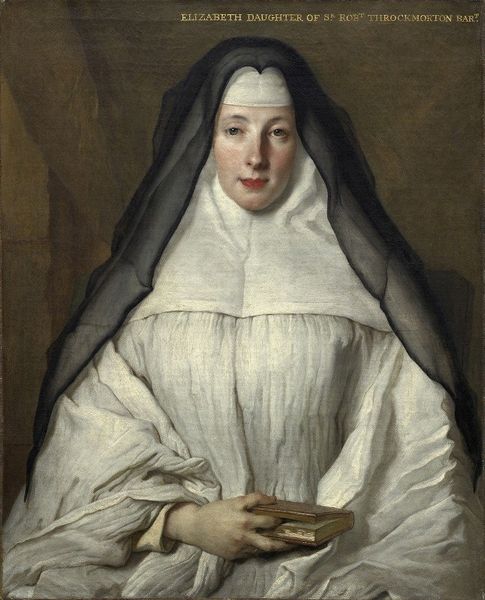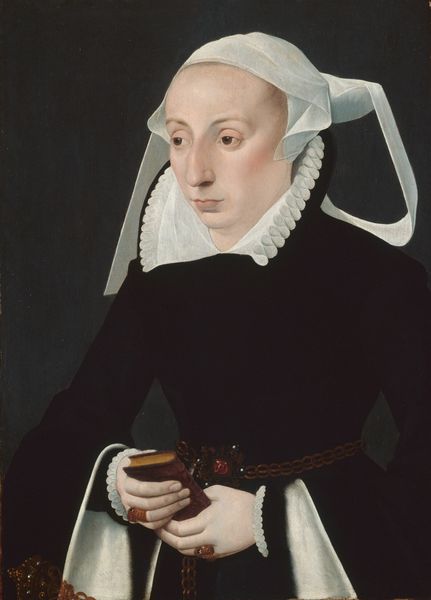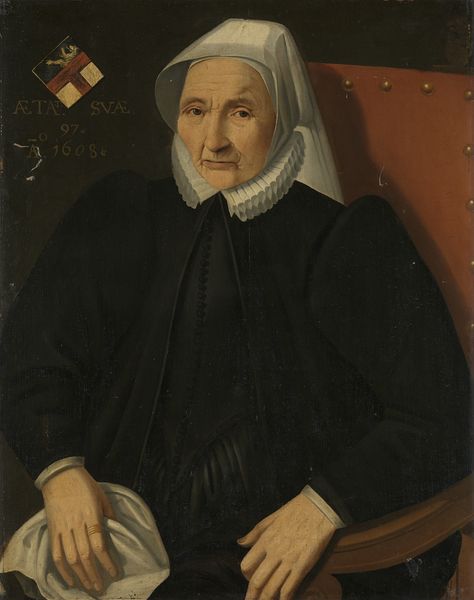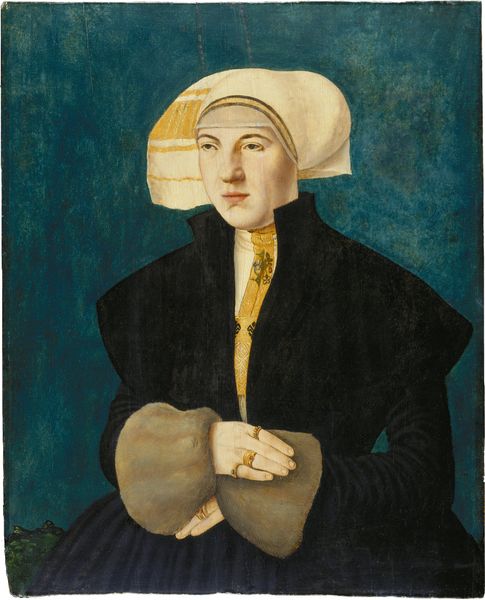
oil-paint
#
portrait
#
medieval
#
oil-paint
#
11_renaissance
#
oil painting
#
northern-renaissance
#
italian-renaissance
Dimensions: 43.2 x 48.3 cm
Copyright: Public domain
Editor: We're looking at Quentin Matsys' "Portrait of a Woman" from 1520, an oil painting here at the Met. The woman's gaze is intense, almost severe, and the stark white of her head covering creates a sharp contrast against the dark background. What can you tell me about the formal elements at play here? Curator: Let's begin with the painting's structure. Note how Matsys uses the architectural frame within the painting itself. The columns and entablature not only situate the figure but also compartmentalize the space, creating a sense of contained monumentality. Observe the restricted palette. Predominantly dark hues are punctuated by the white head covering and the gold of the ring and architectural details. What effect does this restricted color range have on your perception? Editor: I see what you mean. It definitely draws my eye to those areas of white and gold, giving them greater importance. Is there anything to say about the textures depicted? Curator: Indeed. Consider the contrast between the smooth, almost porcelain-like treatment of the woman's face and the heavier impasto visible on the architectural frame. The differing textures establish a hierarchy, prioritizing the figure while grounding her in a constructed reality. Note how the textures enrich the viewer's gaze. The artist seems less interested in depth, than interested in leading the eye to find beauty within its details. Editor: That's fascinating, focusing on the formal aspects really opens up how the painting creates meaning, thank you. Curator: Precisely! By analyzing form and structure, we discover the artist's conscious choices and, ultimately, a deeper appreciation for the artwork.
Comments
No comments
Be the first to comment and join the conversation on the ultimate creative platform.
